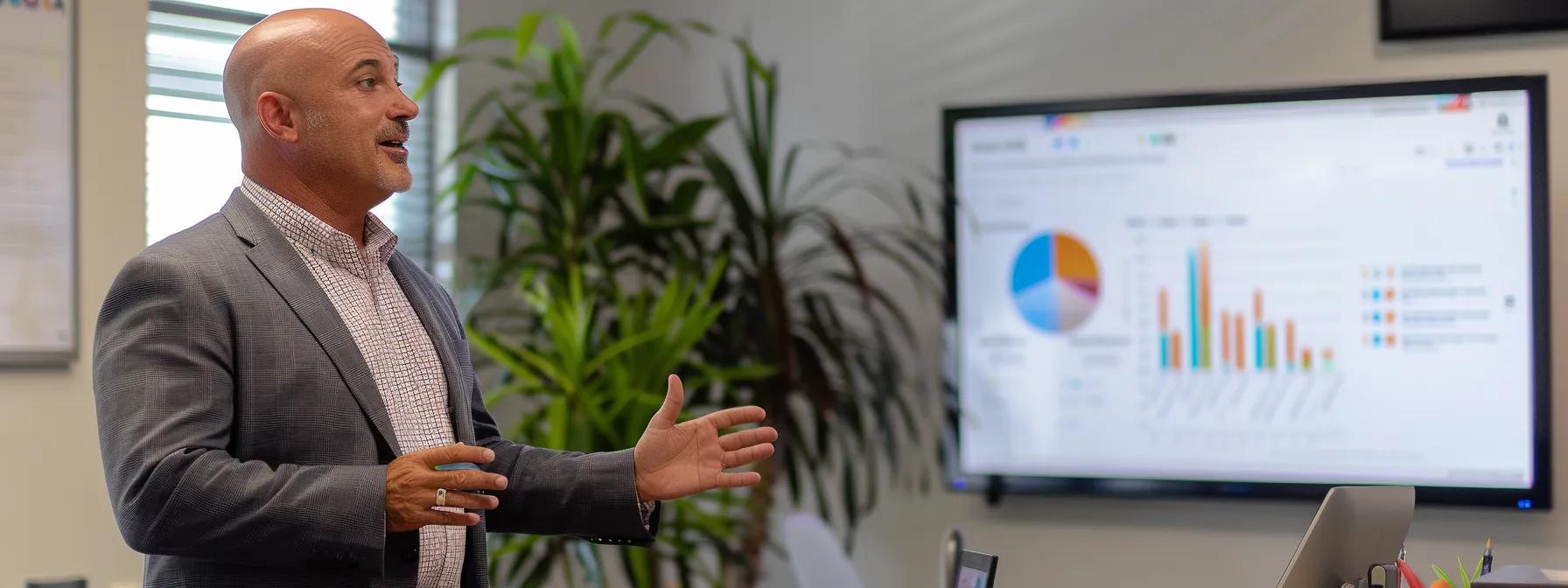In today’s competitive landscape, acquiring customers without overspending is a top priority for growth-driven businesses. A truly cost-effective customer acquisition strategy does more than attract new leads—it ensures long-term value by aligning marketing efforts with audience needs, budget constraints, and clear performance data.
By prioritizing low-cost yet high-impact channels such as search engine optimization (SEO), referral programs, personalized email campaigns, and social media engagement, businesses can significantly lower customer acquisition costs (CAC) while increasing customer lifetime value (CLV). The key lies in optimizing every stage of the customer journey—from initial awareness to conversion and retention—using data-driven tactics.
This guide explores practical, scalable strategies for efficiently acquiring new customers. Whether you’re a small business owner, a marketing strategist, or part of a lean startup team, you’ll discover actionable insights to maximize your marketing ROI and build sustainable growth.
Key Takeaways
- Focus on marketing channels like SEO, email, and referrals to lower customer acquisition costs.
- Understand your target audience and create messages that speak directly to their needs.
- Use tools and data to track which strategies bring the best results for your budget.
- Improve your website and sales funnel to turn more visitors into paying customers.
- Keep current customers happy with loyalty programs and great service to reduce churn.
- Always test, monitor, and adjust your approach to stay effective as your business grows.
Identifying Economic Customer Acquisition Channels

The first step in cultivating a cost-effective acquisition strategy is identifying the channels that yield the best return on investment. This section directly addresses the challenge by explaining that low-cost channels help reach the ideal audience without extensive spending. Investigating your target market is crucial; by leveraging analytics and market research, companies can pinpoint the demographic segments most likely to convert.
Pinpointing Your Ideal Audience for Budget-Friendly Acquisition
Accurately defining and understanding the target audience is essential. Companies learn that consumer segmentation by demographics, psychographics, and purchasing behavior leads to personalized messaging that resonates. For example, data analytics tools and customer personas aid in targeting users based on past buying behavior and online activities. Establishing buyer personas based on clear data—from education and income levels to social interests—can refine the messaging and what channels to use. Moreover, mapping the customer journey from initial awareness to purchase helps in detecting specific stages where potential customers are most receptive.
Selecting Appropriate Acquisition Channels for Cost Savings
The second aspect emphasizes channel selection. Not all marketing channels produce the same results; some, like email marketing and organic social media, can deliver high engagement at a relatively low cost. Companies often experiment with a mix of channels—social media, content marketing, influencer partnerships, and SEO-driven blog posts—to determine which provide the highest conversion rates per dollar spent.
Creating Compelling Value Propositions on a Budget
To reduce acquisition costs, organizations must differentiate themselves with a value proposition that speaks directly to their target customers. This process involves using persuasive copywriting and highlighting unique product benefits, thus ensuring that every communication resonates. Whether it is the promise of enhanced user experience or measurable improvements in performance, a strong value proposition forms the cornerstone of effective campaigns. Moreover, creating free, valuable content and offering incentives such as discounts, loyalty rewards, or trial periods builds credibility and encourages referrals.
Analyzing Channel Costs for Optimal Spending
Finally, continuous monitoring and analysis of channel costs are key practices that enable businesses to identify underperforming investments and reallocate budgets. Tools like Google Analytics and customer data platforms (CDPs) provide insights into the cost per lead. Comprehensive cost analysis allows companies to determine which channels drive the desired quality of leads at the lowest costs.
Implementing Low-Cost Digital Marketing Tactics for Customer Growth

Digital marketing offers numerous low-cost tactics that can dramatically enhance customer acquisition efforts. For many businesses, establishing a strong online presence through search engine optimization (SEO), content marketing, and strategic paid advertising boosts visibility and generates leads without significant investment. Effective digital marketing reduces friction in the customer journey, ensures higher engagement, and ultimately increases revenue margins.
Boosting Organic Reach With Content Marketing and SEO
SEO and content marketing play an imperative role in attracting new customers organically. Content creation that addresses consumer pain points while incorporating relevant keywords and semantic search phrases such as “acquisition strategy” and “customer journey” significantly improves search engine ranking.
Articles, blog posts, whitepapers, and videos not only build brand authority but also serve as touchpoints along the customer acquisition funnel. This integrated approach, coupled with social proof from user testimonials and case studies, moves potential customers gently toward conversion. The primary benefit is that, while paid channels might have an immediate impact, organic content marketing yields sustainable and compounding growth over time.
Driving Conversions With Strategic Paid Advertising
With careful budget allocation, strategic paid advertising can generate quick wins. Platforms like Google Ads, Facebook Ads, and LinkedIn are highly effective when campaigns are laser-targeted. By using audience segmentation and iterative A/B testing, marketers can refine ad copy and landing pages to achieve better conversion rates while controlling costs. Ad campaigns, often monitored in real-time using dashboards, allow businesses to make data-driven decisions.
The digital environment today is highly competitive; thus, even minimal budget adjustments can have a dramatic impact on customer acquisition costs. Data analytics provides insights into which ad groups perform best, enabling further refinements. The efficient use of micro-targeting and retargeting techniques means that even small advertising budgets can yield significant returns if managed as part of a broader digital strategy.
Leveraging Email Marketing and Automation for Affordable Outreach
Email marketing remains one of the most cost-effective channels available. Automation tools enable tailored communications that nurture leads throughout the customer acquisition funnel. By conducting segmented and personalized email campaigns, companies can build lasting relationships with their audience. Marketers also benefit from email analytics to measure open rates, click-through rates, and conversion metrics. Consistent messaging, when combined with promotional offers and value-added content, drives brand loyalty and customer retention.
Utilizing Social Media for Economical Customer Engagement
Social media channels offer a free platform for cost-effective customer engagement. Brands that actively interact on platforms like Facebook, Instagram, Twitter, and LinkedIn build trust and create a community that champions the brand. Social media marketing can reduce the friction between consumer interest and acquisition by providing instant feedback, user-generated content, and organic referrals. Post engagements, live interactions, and social storytelling create a vibrant online presence that is both authentic and persuasive.
Investing time to develop user-centric, value-driven social media content encourages sharing and friendships among community members. Consumers are naturally drawn to authentic storytelling, expert advice, and behind-the-scenes content that highlights brand personality. Together, these elements enhance brand visibility and facilitate a more personalized relationship with potential customers.
Optimizing Website Conversion for Higher Returns
Ultimately, all digital marketing strategies converge on the website, which serves as a hub for conversions. Optimizing website elements—from page loading speeds to intuitive navigation and persuasive call-to-action placements—greatly influences conversion rates. Conversion rate optimization (CRO) involves A/B testing, heat map analysis, and customer journey mapping, allowing businesses to identify and eliminate sources of friction.
Harnessing the Power of Referrals and Partnerships for Affordable Acquisition

Referrals and partnerships are powerful tools that extend the reach of a marketing strategy without substantial financial investment. Leveraging the trust that exists between current customers and their networks can lead to lower acquisition expenses and higher conversion rates.
Developing Customer Referral Programs to Lower Acquisition Expenses
The introduction of customer referral programs involves incentivizing existing customers to refer friends or colleagues in exchange for rewards such as discounts, loyalty points, or special offers. These programs operate on the principle of social proof, making them a low-cost yet highly effective marketing tactic. A well-structured referral program stimulates word-of-mouth and effectively harnesses the power of the satisfied customer base to drive acquisition.
Building Strategic Partnerships for Shared Acquisition Costs
Strategic partnerships enable brands to co-market products or services with complementary businesses. These partnerships often include joint promotions, bundled offerings, or four-way collaborations that benefit both parties by splitting marketing costs and expanding audiences. In many cases, partners can exchange email lists, co-host webinars, or enable mutual social media cross-promotions, which further enhances visibility. This strategy not only reaches already engaged audiences but also leverages available trust in partner brands, reducing the overall friction in the acquisition process.
Encouraging Word-of-Mouth Marketing Through Excellent Service
Businesses that excel in customer service naturally encourage word-of-mouth marketing. Delivering exceptional service at every touchpoint creates customers who are more likely to recommend the brand to others. The key lies in not only handling customer inquiries efficiently but also offering follow-up support and personalized service. This elevated level of service ensures that customers are not only satisfied but motivated to share their positive experiences on social media or in personal conversations. This organic marketing minimizes the need for expensive ad dollars and adds authenticity to the acquisition process.
Implementing Affiliate Marketing for Performance-Based Spending
Affiliate marketing is another strategy that allows companies to pay only for successful conversions. By partnering with influential affiliates—such as bloggers, industry experts, or social media personalities—businesses can implement a performance-based marketing approach. Affiliates earn a commission for every conversion they drive, which means that the acquisition cost is directly linked to performance. This model reduces overhead while incentivizing affiliates to deliver quality leads. Regular tracking and transparent communication with affiliates allow for continual optimization of campaign performance.
Optimizing Your Sales Funnel for Cost-Efficient Customer Conversion

An optimized sales funnel plays a critical role in ensuring that every potential customer is efficiently nurtured down the conversion path. By focusing on each stage of the funnel—from awareness to decision-making—businesses can dramatically improve conversion rates and lower overall acquisition costs. The sales funnel provides a systematic approach where every touchpoint is designed to reinforce the value proposition and address customer pain points seamlessly.
Improving Each Stage of the Sales Funnel for Better Efficiency
The top, middle, and bottom of the sales funnel require tailored strategies. At the awareness stage, companies deploy content marketing, paid search, and SEO to attract a broad yet relevant audience. In the consideration stage, nurturing leads with targeted email campaigns and personalized content becomes crucial. This phase is driven by education, providing testimonials, case studies, and detailed product information that mitigate concerns about value and risk.
Employing Retargeting Strategies to Recapture Interested Leads
Retargeting is an essential tactic for recapturing leads that have expressed interest but did not convert immediately. Techniques such as remarketing ads, follow-up emails, and dynamic content presentations remind potential customers of the value they once acknowledged. This strategy creates multiple opportunities for conversion, ensuring that no potential lead is left unattended.
Personalizing the Customer Journey to Increase Conversion Rates
Personalization across the sales funnel is key to lowering acquisition costs. By tailoring recommendations, messaging, and offers based on user behavior and data, companies achieve higher relevancy and engagement. Customizing landing pages for different segments or utilizing dynamic content based on browsing patterns contributes to a richer customer experience. Tools such as CRM systems and marketing automation platforms enable personalization at scale.
Using Data Analytics to Identify and Fix Funnel Drop-Off Points
Data analytics serve as the backbone of an optimized sales funnel. Analyzing user behavior at each stage can pinpoint where drop-offs occur. Whether it is an excessively complex registration process or unclear value propositions, continuous testing and refinements based on metrics such as bounce rate, click-through rate, and conversion rate are essential. By systematically addressing these drop-off points, companies can improve overall funnel efficiency and reduce conversion costs. Techniques like A/B testing, heat mapping, and user feedback surveys offer actionable insights that lead to iterative improvements throughout the funnel.
Focusing on Customer Retention to Reduce Overall Acquisition Spending

Customer retention is key to sustaining growth, as the cost of maintaining an existing customer is considerably lower than acquiring a new one. Fostering loyalty through retention strategies creates a stable base of repeat customers who contribute to long-term revenue. In today’s market, retention is as critical as acquisition—high retention rates further reduce customer acquisition costs while increasing brand profitability.
Implementing Customer Loyalty Programs to Encourage Repeat Business
Customer loyalty programs incentivize existing customers by offering rewards, discounts, or exclusive access in exchange for continued patronage. Such programs not only generate recurring revenue but also encourage customers to act as brand ambassadors, thereby lowering overall acquisition costs. Effective loyalty initiatives are tailored to customer behavior and preferences, ensuring that the benefits resonate with the target audience.
Gathering Customer Feedback to Improve Retention and Reduce Churn
Regularly collecting customer feedback helps companies stay attuned to evolving customer expectations. Feedback channels such as surveys, reviews, and social media interactions provide critical insights into how products or services can be refined. Addressing concerns promptly not only increases satisfaction but also builds trust, reducing the risk of churn. A data-driven approach to feedback allows businesses to implement changes that directly impact retention rates.
Offering Freemium Models or Free Trials to Convert Users
Offering freemium models is an effective strategy to encourage trial and eventual commitment. By reducing entry barriers, potential customers can experience product value without the initial financial commitment. This approach builds trust and demonstrates tangible benefits, which in turn increases conversion rates. Many SaaS companies and digital service providers have successfully leveraged freemium models to convert trial users to paying customers, positively impacting customer lifetime value while reducing acquisition overhead.
Boosting Customer Lifetime Value Through Upselling and Cross-Selling
Upselling and cross-selling initiatives not only increase immediate revenue but also extend each customer’s lifetime value. Once trust is built through effective retention strategies, presenting additional products or services becomes a natural progression. This method reduces the need to continually invest in new customer acquisition, as loyal customers generate more revenue over time. Tailored offers based on previous purchases help maximize the overall return on investment from each customer relationship.
Measuring and Refining Your Cost-Effective Acquisition Efforts

Businesses must continuously measure and refine their efforts to sustain and improve the efficiency of customer acquisition strategies. The optimal use of analytics and performance metrics enables data-driven decision-making, ensuring that every marketing dollar is well spent. Tracking key metrics like Customer Acquisition Cost (CAC), conversion rates, and retention rates provides deep insights into what works and where improvements are necessary.
Tracking Key Metrics Like Customer Acquisition Cost (CAC)
A critical part of any acquisition strategy is the accurate measurement of CAC. By calculating the total cost of marketing and advertising efforts divided by the number of new customers acquired, businesses can determine how efficiently they are using their budgets. Regular monitoring of CAC helps companies identify outliers and inefficient channels, allowing them to reallocate resources where they are most effective. Using dashboards and analytics platforms, teams can track CAC trends over time and compare them across different marketing channels. This practice helps ensure that the acquisition process remains cost-effective and aligned with overall business goals.
A/B Testing Different Strategies to Find What Works Best
A/B testing is a valuable tool for continuously refining customer acquisition efforts. Whether testing variations of ad copy, landing pages, or email subject lines, incremental adjustments can result in significant improvements in conversion rates. Successful A/B tests provide quantitative evidence that guides future marketing strategies.
Continuously Monitoring and Adjusting Your Acquisition Strategy
Market dynamics and consumer behaviors evolve over time, which necessitates a flexible and responsive acquisition strategy. Continuous monitoring ensures that marketers can detect emerging trends, seasonal shifts, and changes in consumer sentiment. This iterative approach allows businesses to pivot their strategies in real time, optimizing spending and targeting for maximum impact. Tools such as Google Analytics, CRM systems, and ad performance dashboards provide real-time feedback that aids in the adjustment of campaigns. This data-centric approach empowers businesses to fine-tune messaging, creative assets, and ad placements, ensuring that every channel remains cost-effective.
Focusing on Acquiring Profitable Customers for Long-Term Success
Finally, the emphasis should be on acquiring not just any customers but those who are most likely to be profitable over the long term. By segmenting customer data and closely analyzing conversion patterns, businesses can identify high-value customer segments. Focusing on these segments helps lower the overall CAC while improving the return on investment. Companies may also use predictive analytics to forecast customer lifetime value, further aligning acquisition strategies with broader business profitability. Optimized targeting and refined messaging designed specifically for these profitable segments solidify the efficiency and enduring value of the acquisition strategy.
Conclusion
Successful customer acquisition doesn’t require a massive budget—it requires strategic focus, channel optimization, and ongoing analysis. By refining how you attract, convert, and retain customers, your business can grow steadily without wasting marketing dollars.
From leveraging organic traffic through SEO and content marketing to nurturing relationships with email automation and referral programs, each tactic covered in this guide offers a measurable way to reduce acquisition costs. Businesses that prioritize retention, track key performance metrics, and continuously adjust their strategies based on data insights are well-positioned for long-term profitability and scale.
When executed thoughtfully, cost-effective acquisition strategies do more than lower spend—they create lasting customer relationships and a resilient growth engine for your brand.
Frequently Asked Questions
How can small businesses lower customer acquisition costs effectively?
Small businesses can reduce CAC by focusing on organic marketing tactics such as SEO, creating high-value content, launching referral programs, and utilizing affordable email marketing tools. Prioritizing channels that offer high ROI and using performance data to guide budget allocation is essential.
What role does customer feedback play in refining acquisition strategies?
Customer feedback uncovers friction points in the buyer’s journey. It helps businesses refine messaging, improve product or service delivery, and adjust campaigns to better meet expectations—all of which enhance retention and reduce churn.
Is affiliate marketing a viable option for lowering acquisition costs?
Yes. Affiliate marketing enables businesses to pay only for successful conversions, making it a performance-driven and low-risk strategy. It’s especially effective for startups and online brands seeking scalable, budget-friendly outreach.
Why is continuous monitoring critical for acquisition strategies?
Markets shift quickly, and customer behavior evolves. By consistently monitoring campaign performance through analytics tools, businesses can identify what’s working, spot inefficiencies, and adapt strategies in real time to maintain cost-effectiveness.
How important is website optimization in the acquisition process?
Your website is the hub of your digital customer experience. Fast load times, intuitive navigation, and clear calls to action are essential for turning visitors into customers. Conversion rate optimization (CRO) directly impacts how efficiently your marketing efforts translate into sales.
Which metrics matter most when evaluating acquisition strategies?
Key metrics include Customer Acquisition Cost (CAC), Conversion Rate, Retention Rate, and Customer Lifetime Value (CLV). Together, these metrics provide a comprehensive view of acquisition efficiency and long-term impact.
How do retention strategies help lower acquisition spending over time?
Keeping existing customers is less costly than acquiring new ones. Strong retention strategies—such as loyalty programs, personalized communication, and excellent service—build long-term value and reduce the need for frequent new customer acquisition.






